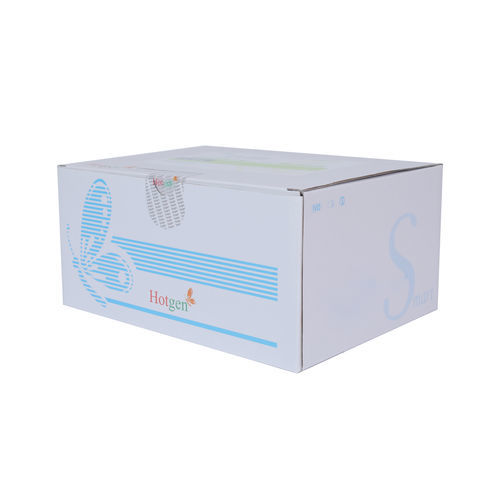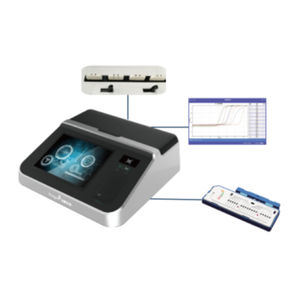
- Laboratory
- Laboratory medicine
- Immunity test kit
- Beijing Hotgen Biotechn Co., Ltd

- Products
- Catalogs
- News & Trends
- Exhibitions
Immunity test kit procalcitoninprostate-specific antigensurface
Add to favorites
Compare this product
Characteristics
- Application field
- immunity
- Tested parameter
- procalcitonin, prostate-specific antigen
- Sample type
- surface
- Format
- strip
Description
Colloidal gold is the elemental gold in the colloidal state, because its elementary particle size is very small and can be dispersed in the solution to form a colloid, so it is called colloidal gold. The conventional preparation method of colloidal gold is to reduce the gold element in chloroauric acid with a reducing agent to form gold colloidal particles. The colloidal particles are negatively charged in an alkaline environment and can be firmly bound to the positively charged groups of the protein to label the protein for subsequent detection, such as making colloidal gold test strips (cards) for substance Detection.
Principles of ELISA
① Make the antigen or antibody bind to the surface of a solid carrier and maintain its immunological activity.
② The antigen or antibody is linked to an enzyme to form an enzyme-labeled antigen or antibody. This enzyme-labeled antigen or antibody retains both its immunological activity and enzyme activity. During the measurement, the test specimen (the antibody or antigen in it) and the enzyme-labeled antigen or antibody are reacted with the antigen or antibody on the surface of the solid phase carrier in different steps. The antigen-antibody complex formed on the solid phase carrier is separated from other substances by washing, and finally the amount of enzyme bound on the solid phase carrier is in a certain proportion to the amount of the tested substance in the specimen. After adding the substrate for the enzyme reaction, the substrate is catalyzed by the enzyme to become a colored product.
Exhibitions
Meet this supplier at the following exhibition(s):

Other Beijing Hotgen Biotechn Co., Ltd products
CLINICAL DIAGNOSIS & PRODUCT SOLUTIONS
Related Searches
- Assay kit
- Infectious disease detection kit
- Antigen assay kit
- Strip detection kit
- Laboratory detection kit
- Hormone test kit
- POC reader
- Blood POC reader
- Portable POC reader
- Whole blood POC reader
- Biological assay kit
- Serum POC reader
- POC plasma analyzer
- Multiparametric POC reader
- Optical POC analyzer
- Immunity assay kit
- PCT test kit
- Urine POC reader
- Prostate-specific antigen test kit
- Saliva POC reader
*Prices are pre-tax. They exclude delivery charges and customs duties and do not include additional charges for installation or activation options. Prices are indicative only and may vary by country, with changes to the cost of raw materials and exchange rates.



